A night spent in the Sicily countryside, between cheese making, good food and a history lesson.
In Sicily, nature is rarely silent. It roars, shouts, yells at you; you’re slapped by the heat, left reeling by the wind, made motionless by the sounds of the sea.
Yet, there are times – albeit rarely – when the Sicilian nature is quiet. A few moments, perhaps no more than ten or fifteen minutes a day, when sounds and colours are muted, and they whisper at you.
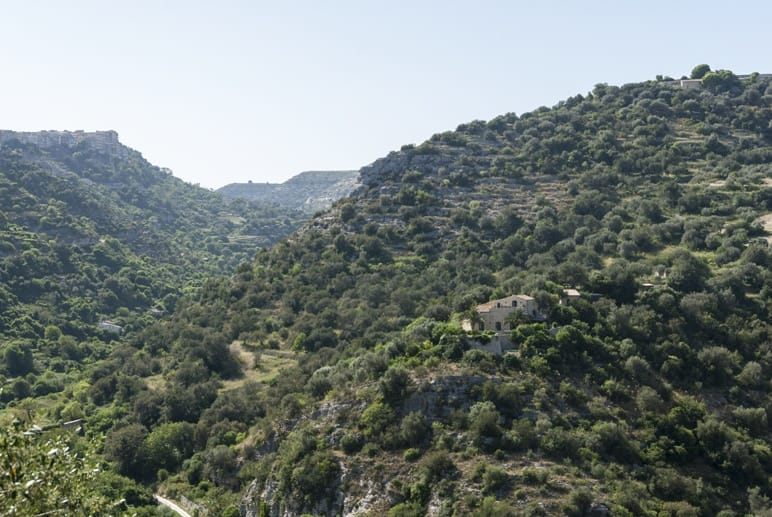
That sunset was one of those moments. We were driving around the Sicily countryside, after having spent the day wandering around Ragusa Ibla, a Baroque gem of the Unesco-listed Noto Valley. We were heading to a masseria for dinner, a traditional Sicilian farmhouse, a few kilometers out of Ragusa Ibla on the way to the coast.
Not much is ever said about the countryside of Sicily. Tourists visiting Italy’s largest island usually head to the towns or to the beaches, but inland Sicily is wild, unspoilt and undiscovered.
Even though we were only a few minutes out of Ragusa, we had no phone connection. All around us was a flat, arid landscape of thistle bushes, olive trees and dry stone walls, slowly painted golden by the setting sun. We drove around looking for the masseria, distracted by what was going on around us. Nature was putting on her best show.
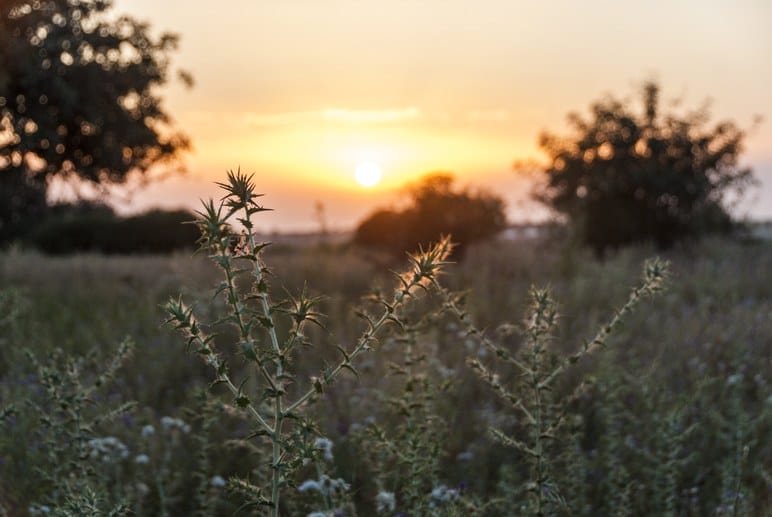
Eventually, we found the farmhouse. Masseria Posto di Blocco 452. The masseria is in the same location as World War 2 checkpoint (‘posto di blocco’), where a battle was fought during the Allied march on Sicily in 1943. A huge carob tree, a plaque and an Italian flag commemorate the sacrifice of Private Rinaldi, who lost his life during the battle.
The Masseria is now a working dairy farm, owned by the Cascone family, that also owns the B&B Vista Sugli Iblei, the small hotel with great view where we stayed in Ragusa Ibla.
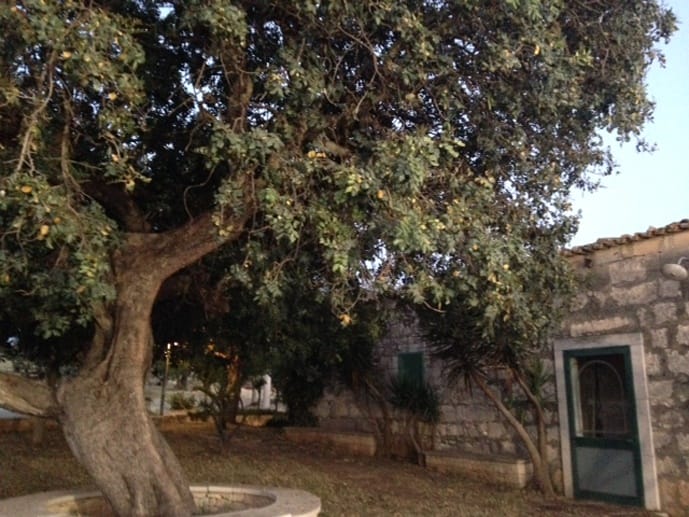
We were greeted by daughter Valentina and taken on a tour of the premises. Strangely, the Masseria was the third dairy farm I visited in the previous three weeks. Now, I’m not going into the ethics of dairy farming – but as a lay person such as myself, the animals at the Masseria looked healthier and better looked after than those in the other farms I has seen. For starters, they were kept outside. There isn’t enough space to have them roam around, so they’re kept in fences, and fed with special attention – Valentina explained that the choice of hay has a role on the flavour of the cheese. The cows are moved inside only during the winter, that in this part of Sicily is short and mild.
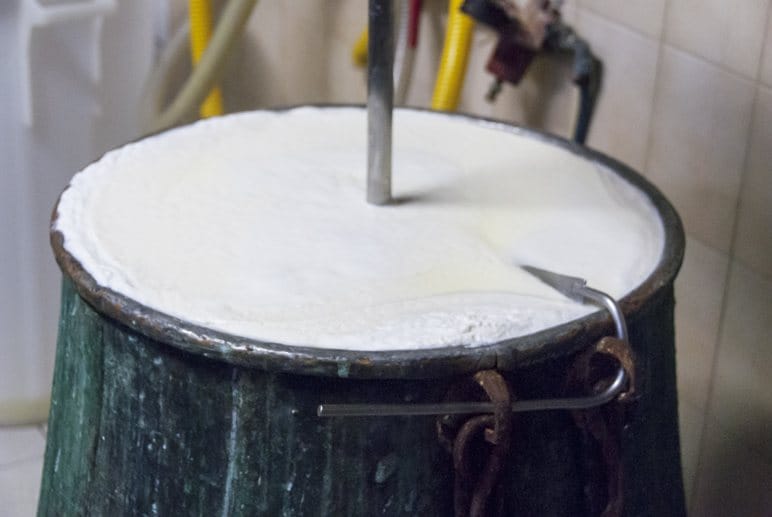
Afterwards Gianni, the father of the family, invited us into the cheese making lab for a demonstration. The Masseria produces two main types of cheese; fresh ricotta, that can be bought warm, and ‘pasta filata’ cheeses, made by heating up chunks of a dairy product known as ‘tuma’ (made with curd, with no added salt) in hot water, and then working them with hands until it becomes a soft and elastic paste. Provola cheese is made with this paste, melded into a pear shape and then smoked or bathed in brine, while caciocavallo ragusano, the most popular cheese of the area, is set in a rectangular mould and aged.
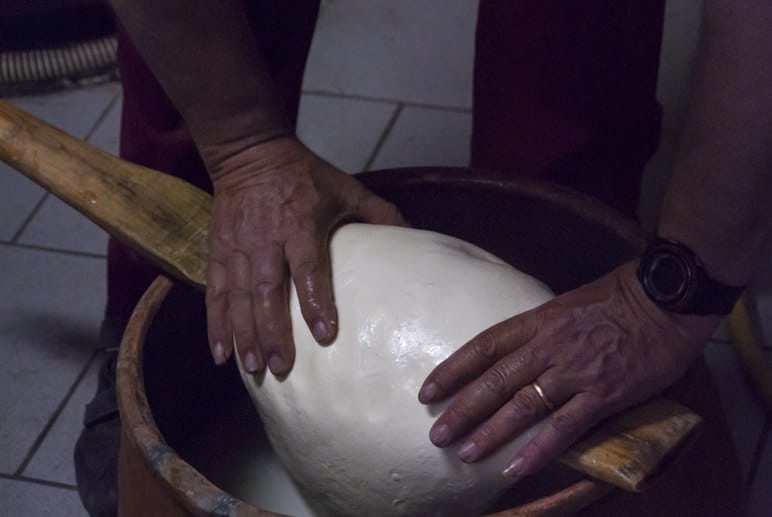
Gianni’s movements revealed the expertise of a lifetime of work. He knew the exact moment to scoop up the warm ricotta from the copper cauldron where it’s made, the right way to work provola to get that perfect pear shape. All the cheese produced at the masseria is sold locally – the small shop right next to the cheese making lab was packed with people buying tubs of warm, freshly-made ricotta, either to take home or to eat there and then, sitting on the hood of their cars.
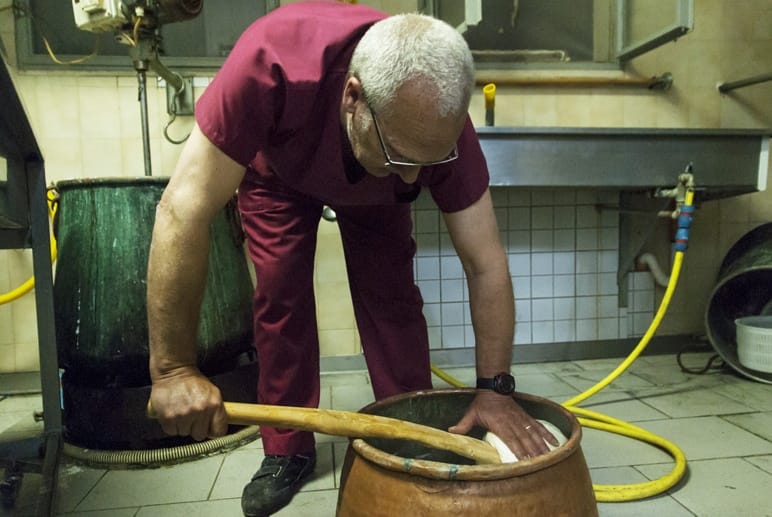
Then, it was time to eat. The cheese making demonstration had left us famished – I was so hungry I had sneakily tried a chunk of tuma, finding it delicious. Just like the dairy farm, the masseria restaurant was a family business. The two daughters, Valentina and Nicoletta, and their boyfriends (both named Peppe) waited the tables. Mothers and aunties worked in the kitchen; when we went in to say hello, they were folding scacce, a traditional kind of filled pastry. Gianni oversaw everything like a proper pater familias.
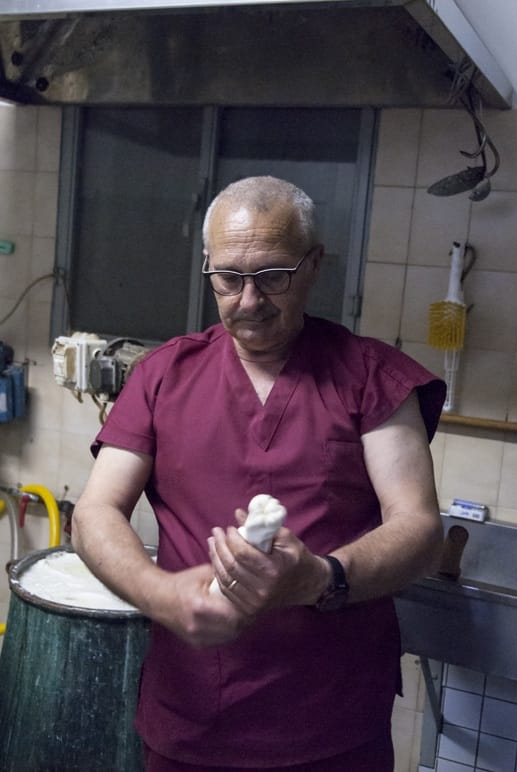
Starter was a selection of farm cheeses, sharp caciocavallo, mellow provola and peppery pecorino, and some plump olives. We then tried some arancini and the scacce we had seen in the kitchen, in three varieties. The tomato kind was a mouthful of summer, the right balance of sweet and savoury, with the warmth of the midday sun.
There’s something special about tomatoes in this part of the world. It may be the weather, the water, the soil or I don’t know what else – fact is, Sicilian tomatoes taste deeper and sweeter than tomatoes from elsewhere. The second scaccia was flavoured with parsley and capuliato, minced sundried tomatoes mixed with basil and olive oil, and the third was filled with ricotta. It was like being at a family dinner – everything was homemade from scratch, from the cheeses to the scacce pastry.
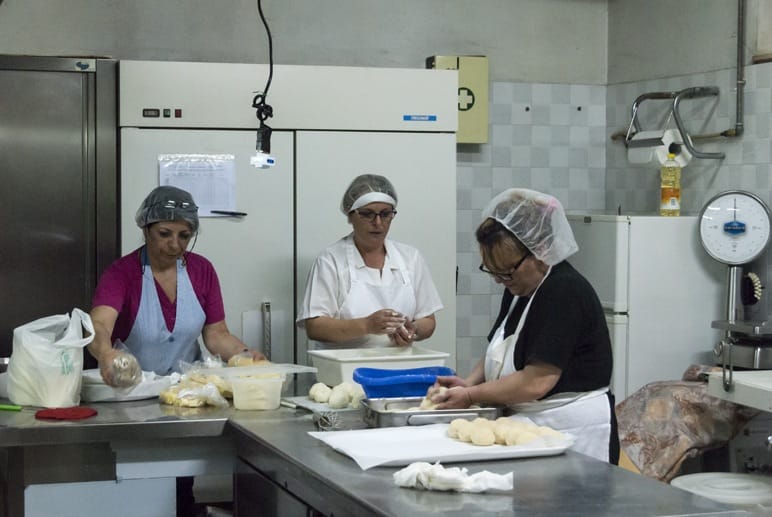
However, when the pasta course was announced, I couldn’t hide my disappointment. What about the warm, fresh ricotta? Just as I was about to say something, one of the two Peppe walked up to the table holding a tray with four mini ricotta tubs. One mouthful, and I was in love. The ricotta was soft and creamy, melting in my mouth with none of the grainy consistence or salty aftertaste you get in supermarket-bought ricotta. It was comforting like family, warm like a hug. I will never eat any other ricotta again, I promised myself. Now I understood why people queued up at the little shop to buy tubs of ricotta.
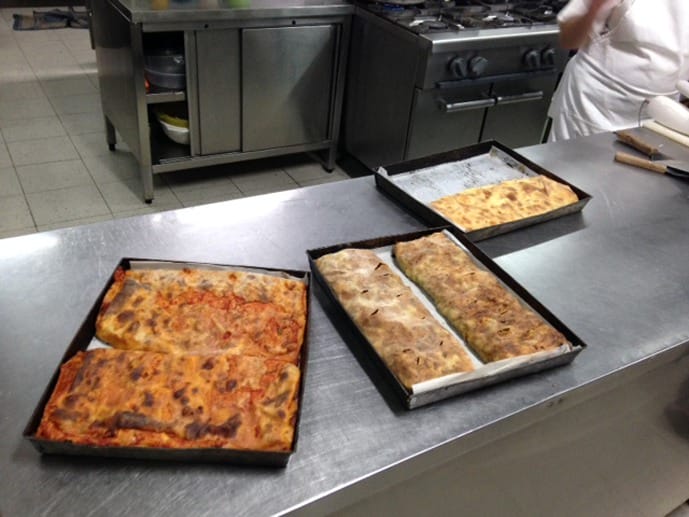
The ricotta was so delicious, everything else paled in comparison. The three pasta courses were amazing – traditional pasta alla norma, with aubergines and salted ricotta, pasta alla carrettiera with oil, garlic, parsley and cheese, so called because it was a farmer’s packed lunch, carried to the fields on a wooden cart (carretto). Even ricotta-filled ravioli, some sweet some savoury, served with tomato sauce, did not reach the depth of flavour that the simple tub of ricotta had.
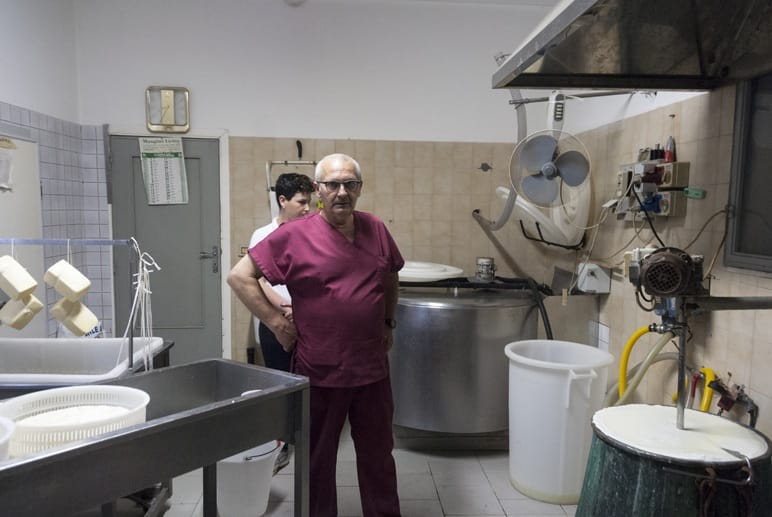
And with the depth of flavour, came the memories. I had never had warm ricotta in my life, yet I felt that the taste reminded me of summer sunsets, of wildflowers kissed by the sun and of the welcoming spirit of Sicilian families. A spirit I know so very well, and it is one of the reasons why I’m always so happy to return to the island.
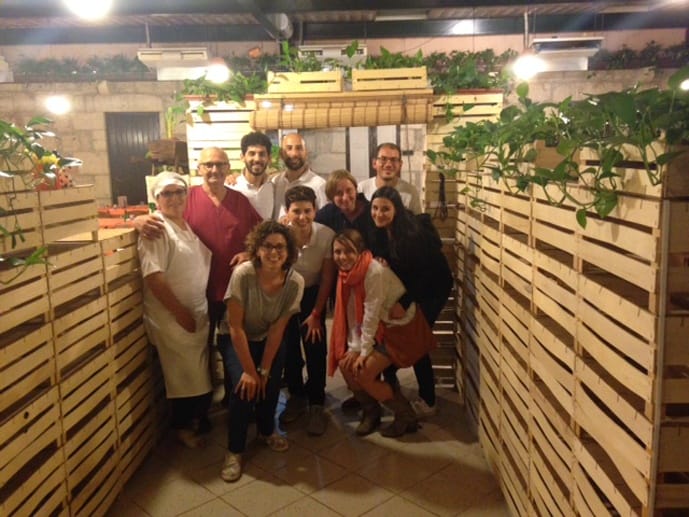
As we walked out of the masseria, after having greeted the Cascone families with warm hugs and handshakes, I kept the warmth of that ricotta with me. The countryside was silver, lit by the full moon. Everything was still, silent.
Many thanks to Alessio from Gente in Viaggio and Stefania and Serena from Sicilying, who invited me on this trip. All opinions are my own – and the memories were priceless.
If you’re still not convinced, here are 5 reasons why you should visit Sicily!
Pin it for later?
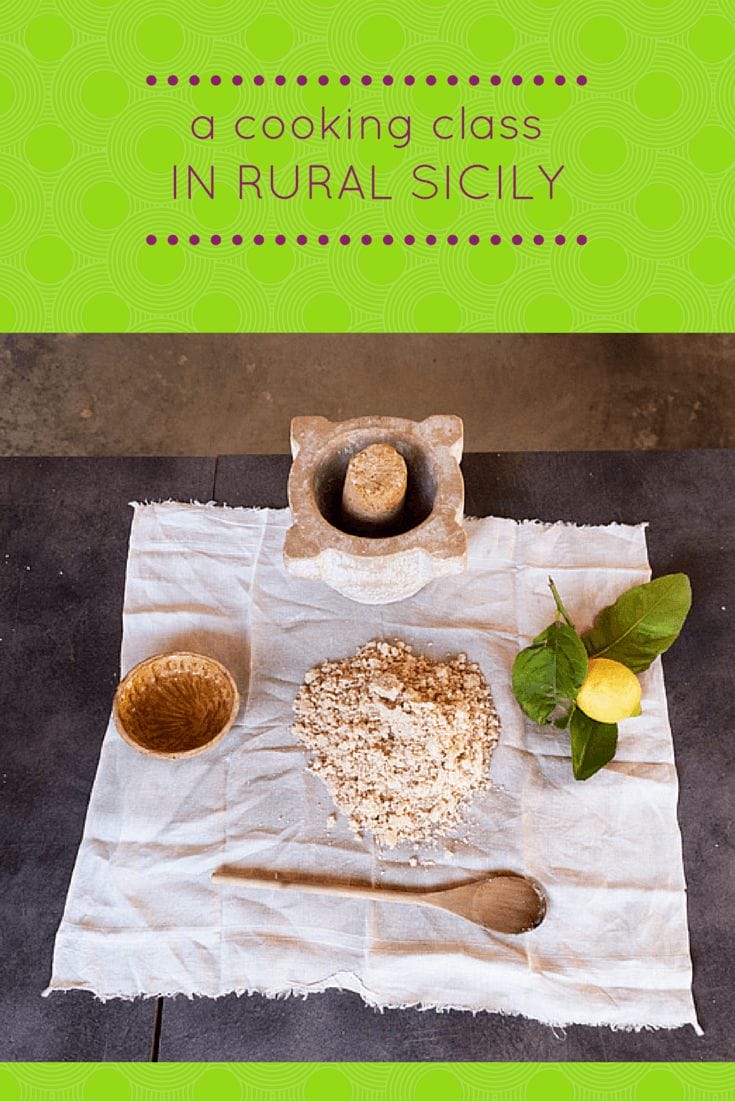

Margherita, I love a farm, and cheese….and the best part of eating it!
Happy #wkendtravelinspiration!
It was sooo tasty! Thanks for your comment Corinne 🙂
Yum. Visiting the masseria sounds like an interesting and delicious experience! Thanks for sharing.
It was amazing! Thanks for stopping by 🙂
What an incredible experience! I love cheese, so, I will love to try these fresh and aged varieties. I think nothing compares with cheese made in the countryside (and eaten there). The flavor cannot be compared to something you buy in a store. I think that is what my husband and I miss the most about our respective countries.
The Sicilian cheese was incredible! But you’re right, homemade cheese is pretty special anywhere…
Visiting a masseria and making cheese, now that is what I love about traveling.
Same here Paula!
So true Shobha! I often go for cheese too instead of dessert! 🙂